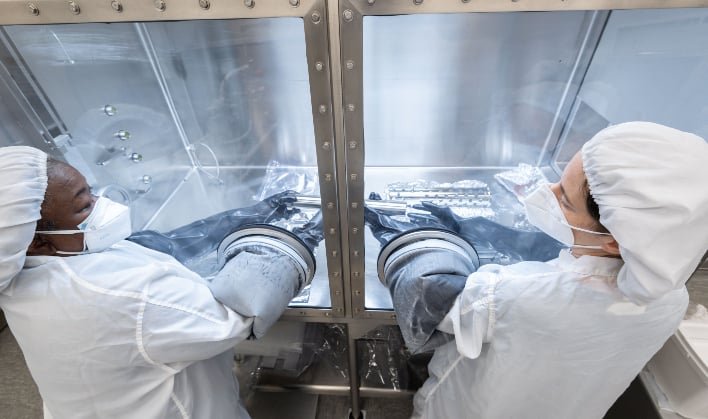NASA Is Studying A 50 Year Old Lunar Sample To Prepare For A Return Trip To The Moon

Artemis 1 Moon rocket is nearing its rollout from the Vehicle Assembly Building (VAB) at NASA's Kennedy Space Center in Florida. Teams are preparing for the rollout that is scheduled to begin on March 17th, as it completes the four-mile journey to Launch Complex 39B on March 18th. However, before Artemis makes its first launch, scientists at NASA's Johnson Space Center in Houston will be studying samples collected during the Apollo-era for the first time.
The sample was opened by the Astromaterials Research and Exploration Science Division (ARES), which safeguards, studies, and shares NASA's collection of extraterrestrial samples. The team that will lead the study is the Apollo Next Generation Sample Analysis Program (ANGSA). It is comprised of scientist who look to learn more about the sample and the Moon's surface before the upcoming Artemis missions that will take humans back to the Moon.
"Understanding the geologic history and evolution of the Moon samples at the Apollo landing site will help us prepare for the types of samples that may be encountered during Artemis," stated Thomas Zurbuchen, Associate Administrator of NASA's Science Mission Directorate in Washington. "Artemis aims to bring back cold and sealed samples from near the lunar South Pole. This is an exciting learning opportunity to understand the tools needed for collecting and transporting these samples, for analyzing them, and for storing them on Earth for future generations of scientists."

"The agency knew science and technology would evolve and allow scientists to study the material in new ways to address new questions in the future," said Lori Glaze, Director of the Planetary Science Division at NASA headquarters. "The ANGSA initiative was designed to examine these specifically stored and sealed samples."
Opening the sample actually began back on February 11th, as the team began the months-long process to remove the sample by first opening the outer protective tube and capturing any gas inside. The team was excited to learn that the tube did not seem to contain any lunar gas, which indicated the seal on the inner sample was most likely still intact. Then on February 23rd, the team began the second step, a weeks-long process of piercing the inner container and slowly gathering any lunar gases that are feasibly still inside.
NASA's Ryan Zeigler, the Apollo sample curator, stated, "A lot of people are getting excited. University of New Mexico's Chip Shearer proposed the project over a decade ago, and for the past three years, we've had two great teams developing the unique equipment to make it possible."
Top Image Courtesy of NASA

